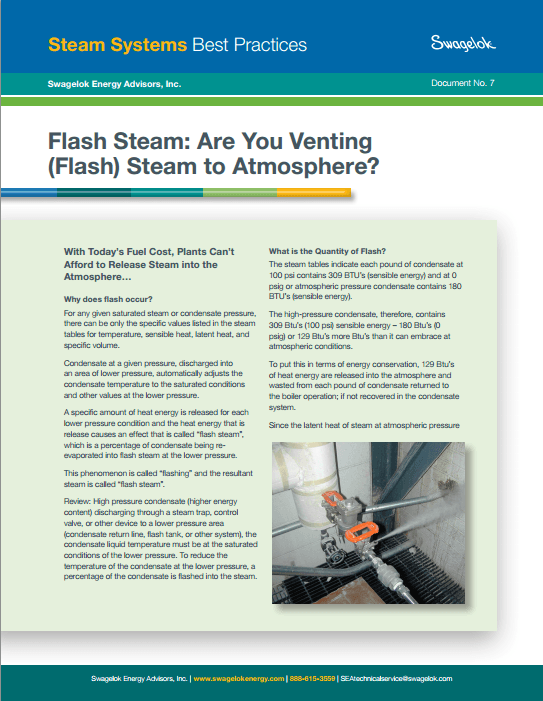 Get this article to review why flash occurs, how to calculate its cost, and proven ways to address it.
Get this article to review why flash occurs, how to calculate its cost, and proven ways to address it.For any given saturated steam or condensate pressure, there can be only the specific values listed in the steam tables for temperature, sensible heat, latent heat, and specific volume.
Condensate at a given pressure, discharged into an area of lower pressure, automatically adjusts the condensate temperature to the saturated conditions and other values at the lower pressure.
This phenomenon is called “flashing” and the resultant steam is called “flash steam”. A specific amount of heat energy is released for each lower pressure condition and the heat energy that is
Review:
To get this article as a PDF, please fill the form then check your email.
About Swagelok Northern California
Swagelok Northern California is a locally owned sales and service center of Swagelok, a $2 billion privately held developer of fluid system products, assemblies, and services for the oil and gas, chemical and petrochemical, semiconductor, and transportation industries. We have locations in Fremont and Concord, CA (USA). Phone: 510-933-6200.
—
Copyright © 2011-2024 Swagelok Northern California. All Rights Reserved.